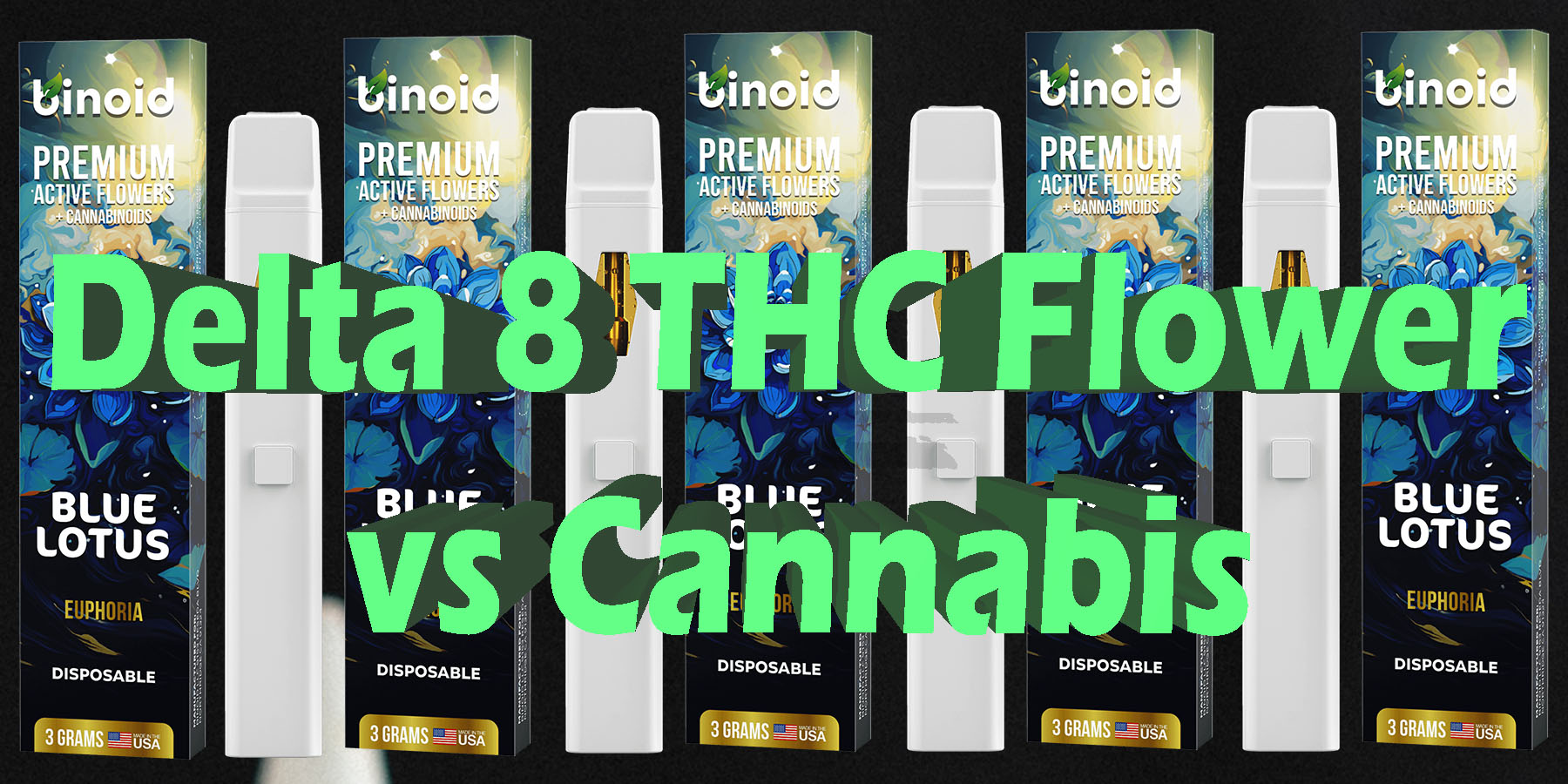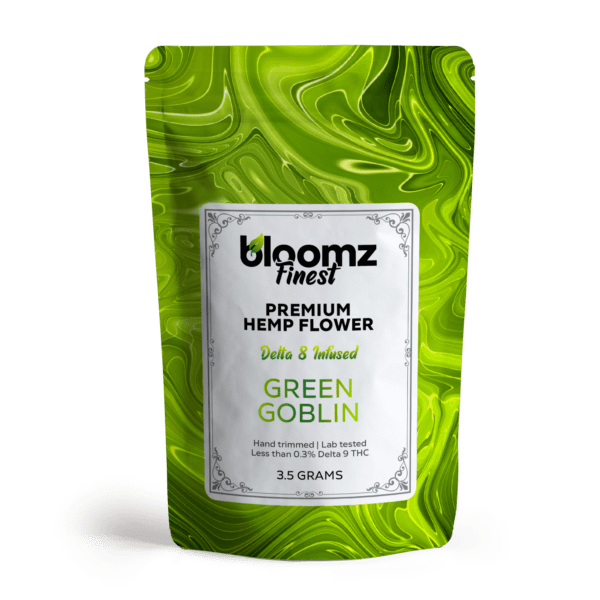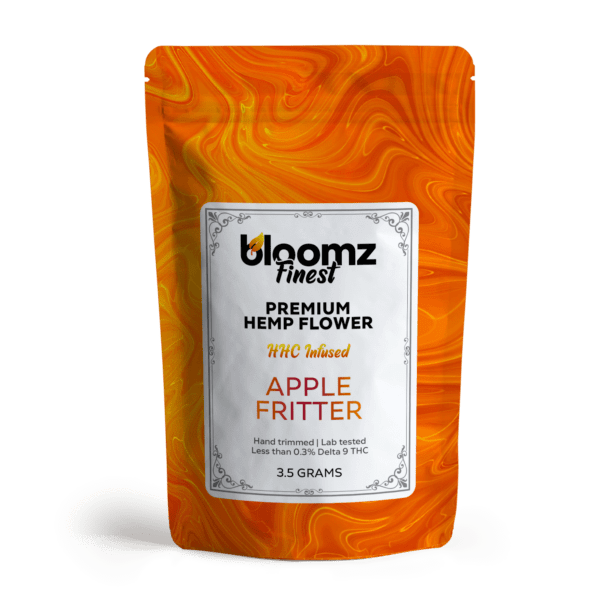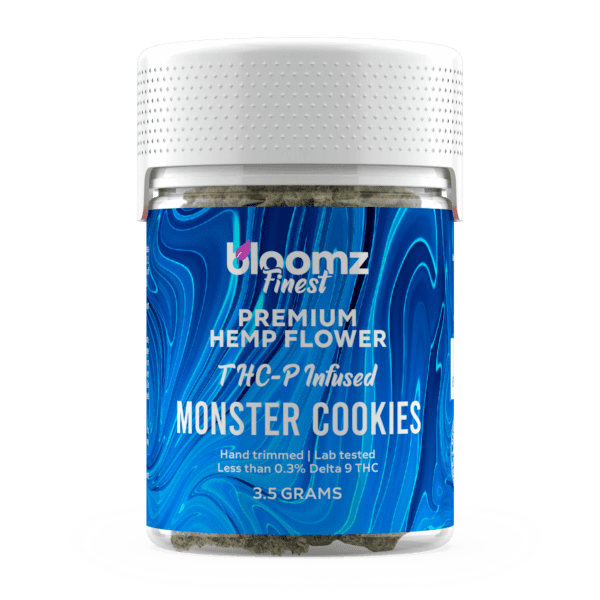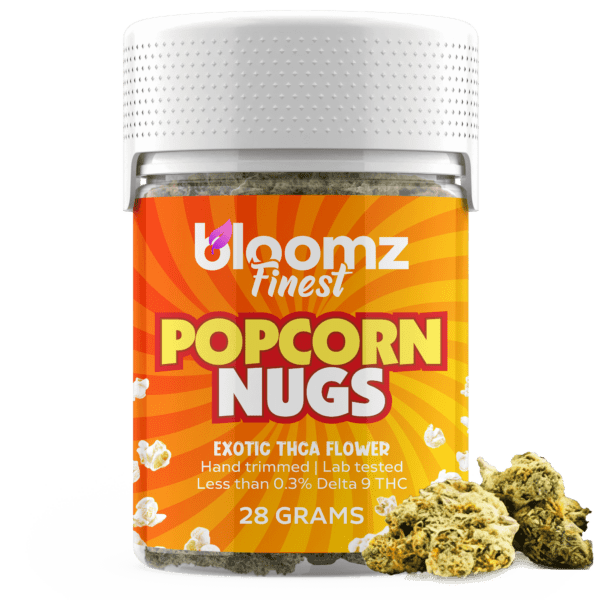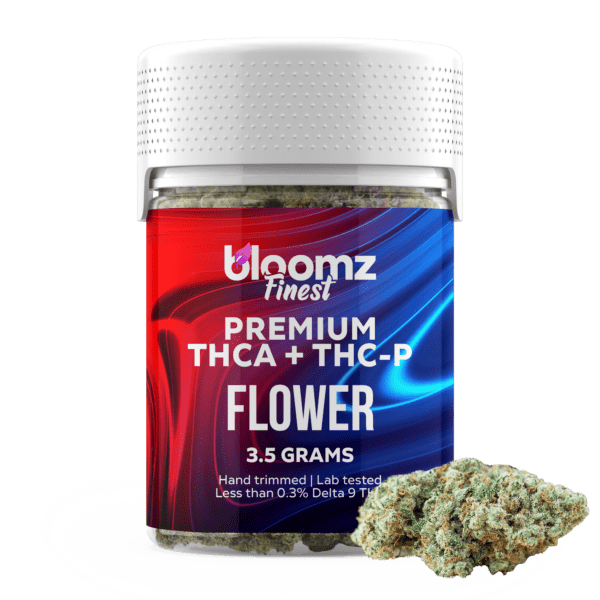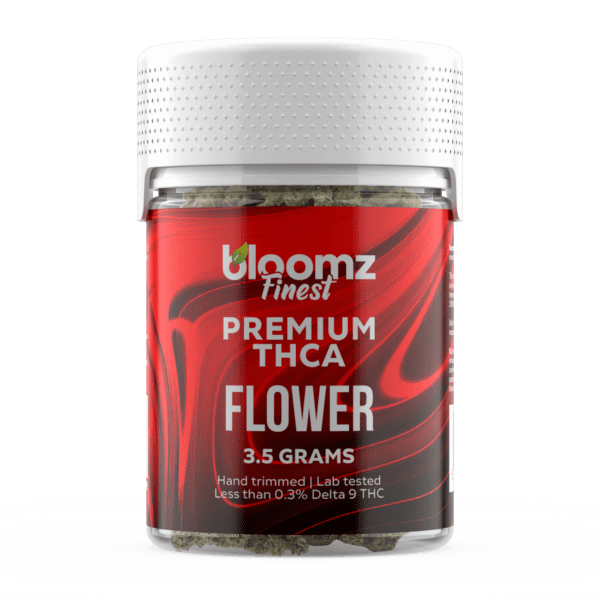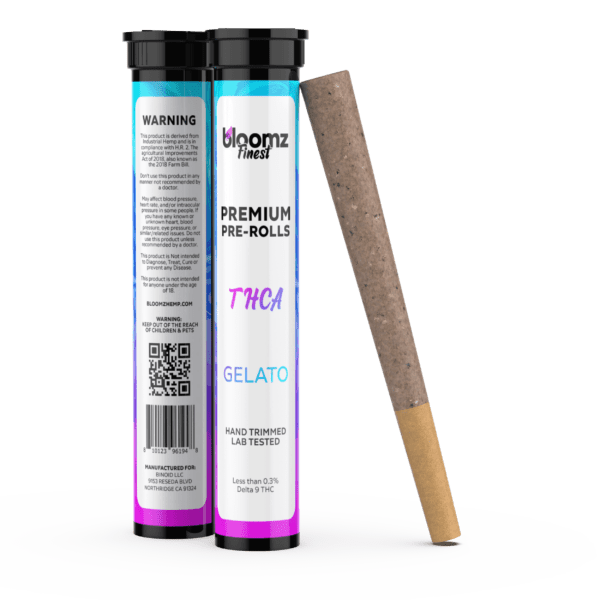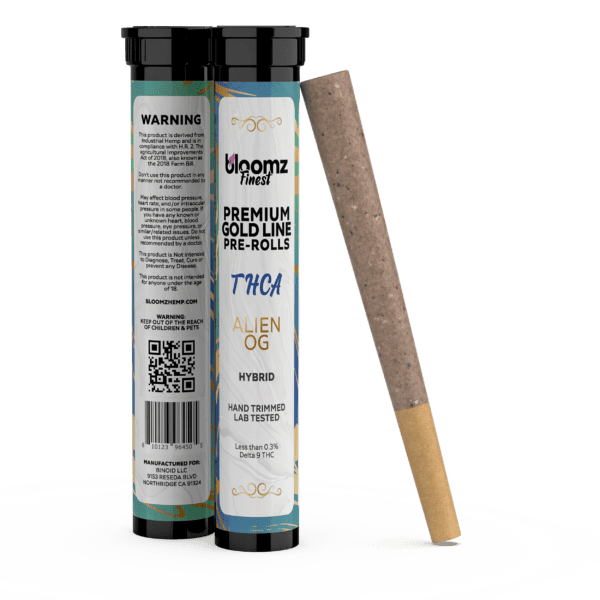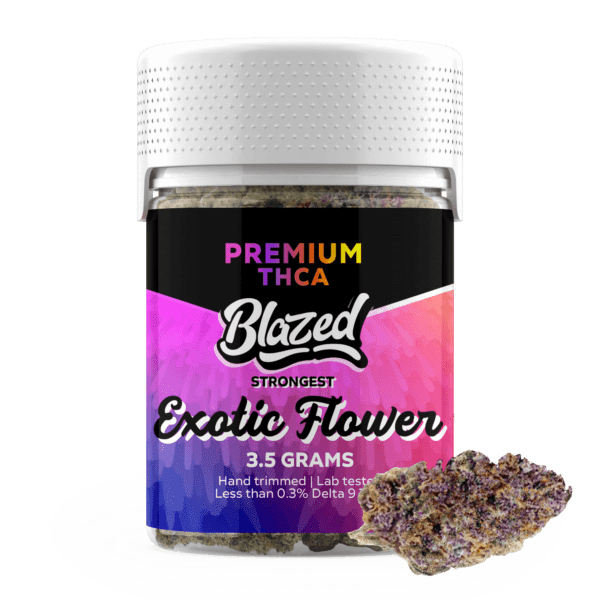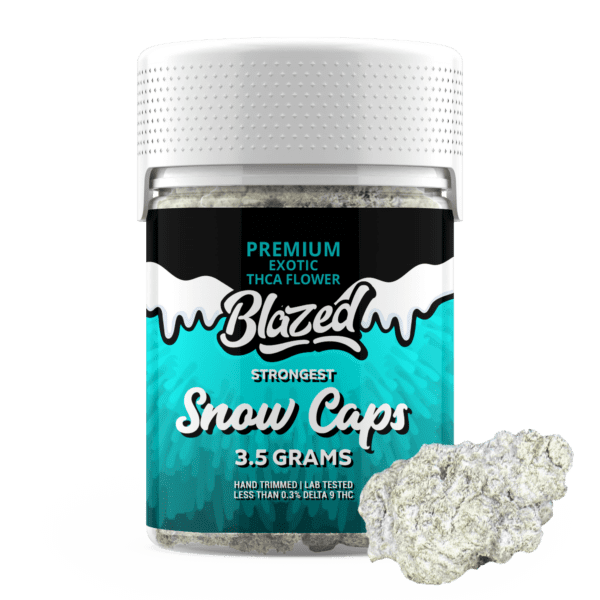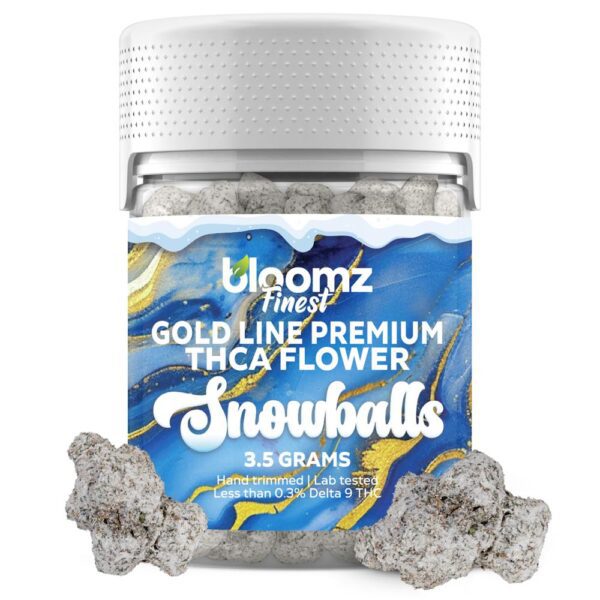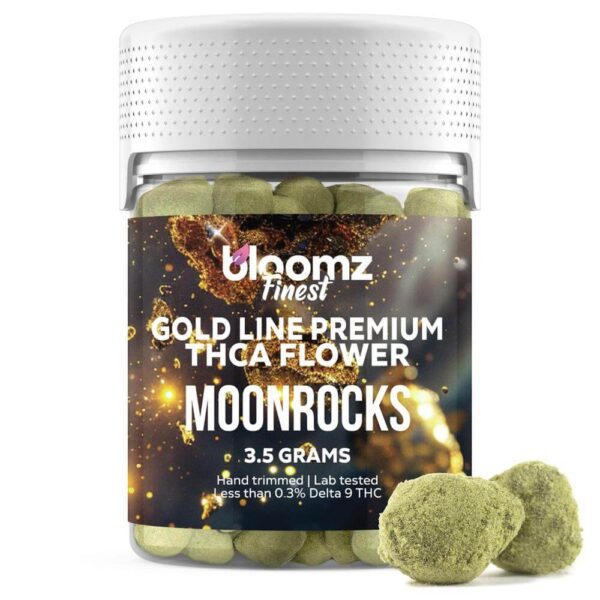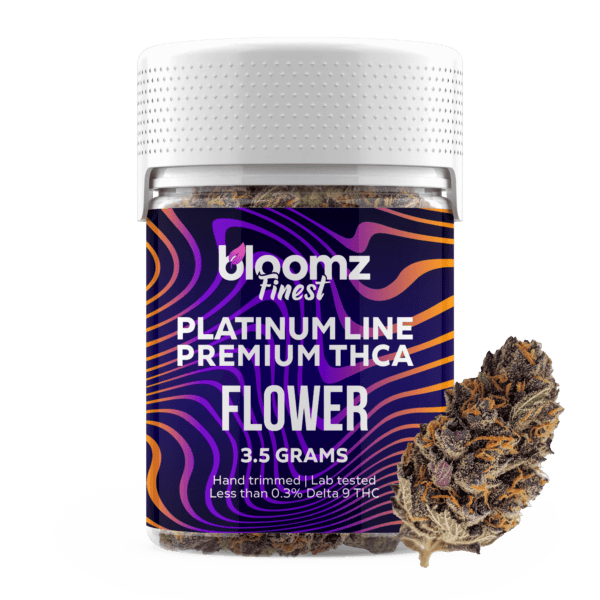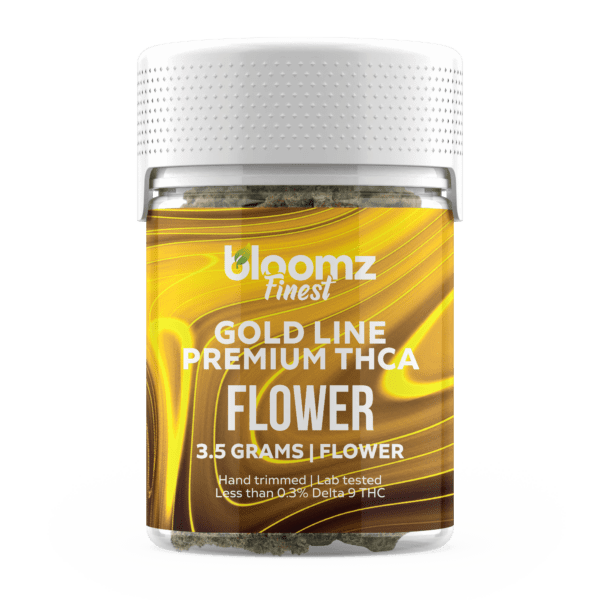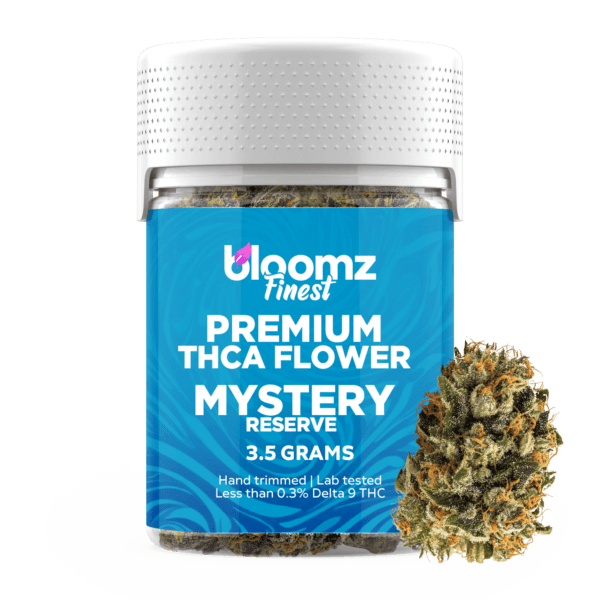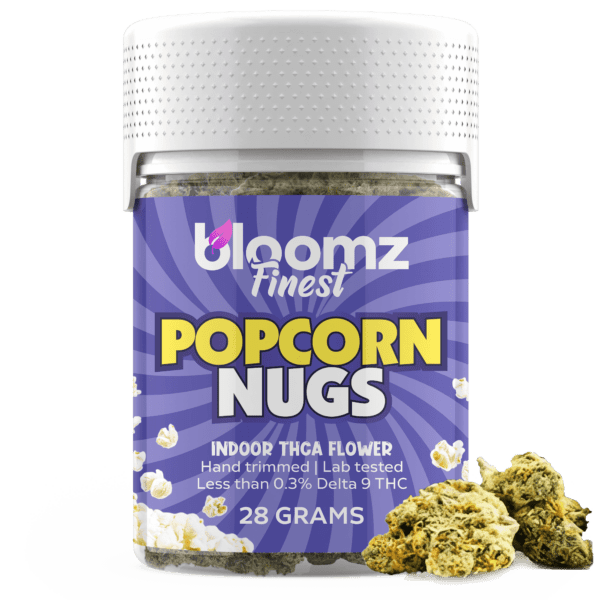In the ever-expanding cosmos of botanical exploration, a fascinating new star has risen to prominence, capturing the attention of both seasoned stargazers and curious newcomers alike. This celestial body is Delta 8 THC, a compound that exists in a captivating space between the familiar and the novel, giving rise to an entirely new class of products, most notably Delta 8 THC Flower. Its arrival on the scene has inevitably sparked a cosmic-level comparison with the central sun of the cannabis world, the legendary and powerful plant known simply as cannabis.
This matchup is about more than just a slight variance in molecular structure; it is a grander narrative about the intersection of nature and science. It’s a deep dive into the contrast between a plant cultivated for its inherent properties and a product ingeniously crafted to deliver a unique experience, a tale of two distinct pathways to a similar state of blissful exploration.
TO BUY DELTA 8 THC FLOWER CLICK HERE
Recommended products
Why It’s Important to Breakdown the Matchup of Delta 8 THC Flower vs. Cannabis
To fully appreciate the modern cannabinoid landscape, it is absolutely essential to break down the nuanced comparison between Delta 8 THC Flower and traditional cannabis. These two products, while often placed in the same category by casual observers, originate from fundamentally different processes, occupy distinct legal spaces, and offer noticeably different experiences. The legislative shifts following the 2018 Farm Bill have unlocked a new frontier of hemp-derived cannabinoids, but this innovation requires a more educated and discerning consumer.
Without a clear understanding of the differences in their chemical nature, methods of creation, and regulatory frameworks, it is easy for one to develop mismatched expectations or navigate this complex market without the necessary tools for making safe and informed choices:
-
Distinguishing Between a Natural Plant and a Manufactured Product: One of the most critical reasons for this breakdown is to clarify the fundamental difference in how these two products are created. Traditional cannabis flower is a direct agricultural product, cultivated over months to naturally express a rich profile of cannabinoids, with Delta 9 THC being a primary component. In stark contrast, Delta 8 THC flower is a manufactured item. It begins as legally compliant hemp flower (rich in CBD but low in Delta 9 THC) which is then artificially infused or coated with a Delta 8 THC concentrate that has been chemically synthesized from CBD. Understanding this distinction—natural growth versus a multi-step manufacturing and infusion process—is paramount for appreciating the potential variations in quality, consistency, and purity between the two.
-
Understanding the Nuances in Effects and Potency: This comparison is vital for setting accurate expectations regarding the user experience. Delta 8 THC and Delta 9 THC are isomers, but their slightly different molecular shapes cause them to interact with the body’s endocannabinoid system in unique ways. A detailed analysis explains why Delta 8 THC is widely reported to offer a milder, more manageable, and often more clear-headed sense of euphoria compared to the potent and sometimes overwhelmingly intense effects of the Delta 9 THC found in traditional cannabis. This knowledge empowers consumers to select the cannabinoid that best aligns with their personal tolerance, desired intensity level, and overall wellness goals.
-
Navigating a Treacherous and Evolving Legal Maze: The legal pathways for these two products could not be more different or convoluted. Traditional cannabis is federally illegal as a Schedule I controlled substance, with its legality determined by a patchwork of individual state laws. Delta 8 THC occupies a precarious gray area; its proponents argue it is federally legal as a derivative of hemp under the Farm Bill, but its intoxicating nature and synthetic origins have led many states to specifically ban or regulate it. A thorough breakdown is crucial for consumers to understand the specific laws in their state and locality, ensuring they are not inadvertently breaking the law in a rapidly shifting and often contradictory legal environment.
-
Empowering Safe and Responsible Consumption: Given that the federally legal hemp market has less stringent and consistent oversight than state-licensed cannabis programs, consumer knowledge is the first line of defense for ensuring safety. By comparing the two, we highlight the importance of scrutinizing lab reports, known as Certificates of Analysis (COAs). A detailed breakdown teaches consumers how to verify the potency of Delta 8 products and, more importantly, how to check for the absence of residual solvents, heavy metals, and other contaminants that could be leftover from the chemical conversion and infusion processes. This fosters a more accountable market and protects consumers from potentially unsafe products.
Contender #1: Delta 8 THC Flower
Emerging from the crucible of modern cannabinoid science and clever legislative interpretation, Delta 8 THC flower has confidently established itself as a major player in the national hemp marketplace. At first glance, it appears entirely familiar, often presenting as lush, aromatic hemp buds that are visually indistinguishable from their more famous cannabis cousins. However, the true essence and defining characteristic of this product lies not in the raw plant matter itself, but in the potent and scientifically derived cannabinoid with which it is infused.
Delta 8 THC flower is not a botanical specimen that can be found growing in nature; it is a thoughtfully engineered product, a harmonious fusion of high-quality, terpene-rich hemp flower and the purified essence of Delta 8 THC. It stands as a powerful symbol of the ingenuity within the hemp industry, which has successfully unlocked the potential of minor cannabinoids to deliver a novel experience in a timeless, smokeable format that has captivated a wide audience.
To understand the flower, one must first understand the cannabinoid itself. Delta-8-tetrahydrocannabinol (Delta 8 THC) is a naturally occurring cannabinoid found in the cannabis plant. It is an isomer of the more abundant and famous Delta 9 THC, meaning they share the exact same chemical formula but have a slightly different molecular structure. Specifically, the location of a critical double bond in their carbon chain is different—it’s on the eighth carbon chain for Delta 8 and the ninth for Delta 9. This subtle structural difference has a significant impact on how the molecule interacts with the CB1 receptors in the brain, which is why its effects are noticeably different from those of Delta 9.
While Delta 8 is a natural component of the cannabis plant, it is only found in minuscule, non-commercially viable concentrations. Therefore, the vast majority of Delta 8 THC on the market is not directly extracted from the plant but is instead created in a lab through a chemical process called isomerization, where abundant, hemp-derived CBD is converted into Delta 8 THC.
Given this, it’s crucial to understand that “Delta 8 THC flower” is not a strain of cannabis that naturally grows rich in Delta 8, as instead, it’s a manufactured, composite product. The process begins with high-quality, legally grown hemp flower, which is naturally rich in CBD (cannabidiol) and contains less than 0.3% Delta 9 THC. This flower provides the physical structure, the terpenes for aroma and flavor, and the minor cannabinoids that contribute to the entourage effect.
This hemp flower then serves as the base which is infused or coated with a pure Delta 8 THC distillate, which is the potent, honey-like oil created through the isomerization of CBD. This process elevates the simple hemp flower into a potent, intoxicating product, delivering the unique effects of Delta 8 THC in a familiar, smokeable form. The quality of the final product is therefore dependent on two key factors: the quality of the initial hemp flower and the purity of the Delta 8 distillate it is infused with.
Recommended products
The creation of high-quality and effective Delta 8 THC flower is a multi-step process that combines expert cultivation with precise laboratory techniques. Each stage is crucial to producing a final product that is safe, potent, and enjoyable for the consumer:
-
Cultivation and Selection of Premium Hemp Flower: The entire process is built upon the foundation of the base flower. The most reputable producers start with premium-grade CBD or CBG hemp flower, often grown indoors or in light-assisted greenhouses using organic and sustainable practices. This flower is cultivated not for its cannabinoid content alone, but for its desirable physical traits: a dense and appealing bud structure, a vibrant color, a rich and pungent terpene profile for aroma and flavor, and a smooth, clean-burning characteristic. The quality of this foundational material is arguably the most important factor in the final user experience.
-
Extraction and Isomerization into Delta 8 THC Distillate: Simultaneously, in a controlled laboratory environment, the Delta 8 THC itself is created. The process begins with the extraction of pure CBD isolate or distillate from large quantities of legal hemp biomass. This highly purified CBD then becomes the feedstock for a chemical process called isomerization. In this process, the CBD is dissolved in a solvent and combined with an acid catalyst, which is then heated and agitated for a specific period. This reaction rearranges the CBD molecules into Delta 8 THC and other cannabinoids. The resulting crude oil is then rigorously neutralized, washed, and purified through multiple stages of distillation to create a pure, potent, and transparent Delta 8 THC distillate, completely free of any residual solvents, acids, or unwanted byproducts.
-
The Art and Science of Infusion: This is the crucial stage where the hemp flower and the Delta 8 distillate are meticulously combined into a single product. There are several proprietary methods to achieve this. A common technique involves gently heating the thick distillate to make it more fluid and then spraying it in a fine, even mist over the hemp buds as they are tumbled. A more advanced and effective method involves placing the flower in a vacuum-sealed chamber, removing all the air, and then introducing the warmed distillate as a vapor, which is then drawn deeply and evenly into every crevice of the plant material. These methods are designed to ensure a consistent and homogenous product without oversaturating the flower.
-
Post-Infusion Curing and Quality Assurance: After the flower has been infused with the distillate, it is no longer just a dry bud; it is a slightly moist and sticky product that requires a final curing stage. This allows the distillate to be fully absorbed and any excess moisture to evaporate, which is essential for ensuring a smooth, even burn and preventing any microbial growth. During this stage, quality control teams visually inspect the product for consistency and take samples for in-house testing to ensure the potency is on target.
-
Comprehensive Third-Party Laboratory Verification: As the final and most critical step for consumer safety, representative samples from every finished batch of Delta 8 flower are sent to an independent, ISO-certified third-party laboratory. This lab performs a full-panel analysis that is presented in a Certificate of Analysis (COA). The COA verifies the potency of Delta 8, confirms the legal compliance of Delta 9 THC levels, and, most importantly, screens for a comprehensive list of potential contaminants, including residual solvents, pesticides, heavy metals, and mycotoxins, giving the consumer a final, transparent seal of approval on the product’s safety and quality.
The market for Delta 8 THC flower has diversified to offer a range of product types and formats, catering to the varied preferences of the modern consumer. This selection mirrors the traditional cannabis market, providing options that appeal to different budgets, desires for convenience, and levels of desired potency. While the underlying product is always a combination of hemp flower and Delta 8 THC distillate, the specific form it takes can significantly shape the overall user experience, from the quality of the smoke to the intensity of the effects:
-
Indoor Delta 8 Flower: This category represents the top shelf of the Delta 8 flower world. The process begins with exceptionally high-quality CBD or CBG hemp flower that has been cultivated indoors in a perfectly controlled environment. This results in a base flower that is dense, visually stunning with a thick coating of its own trichomes, and exceptionally rich in natural terpenes. When this premium-grade hemp is carefully infused with pure Delta 8 distillate, it creates a final product that is celebrated for its superior flavor, incredibly smooth smoke, and potent, well-rounded effects.
-
Outdoor Delta 8 Flower: To create a more accessible and budget-friendly option, producers utilize high-quality, sun-grown CBD or CBG hemp flower as the base material. While outdoor flower may have a slightly less manicured appearance and a more rustic, earthy terpene profile, it can be incredibly flavorful and effective. When infused with the same pure Delta 8 THC distillate, it becomes a highly effective product that offers fantastic value for consumers who prioritize the end effect over aesthetic perfection.
-
Delta 8 Smalls: “Smalls” are the smaller, popcorn-sized buds from a premium hemp harvest. It’s important to note that these are not lower-quality buds in terms of their chemical makeup; they simply didn’t receive as much light as the top colas and thus didn’t grow as large. By infusing these small but potent hemp buds with Delta 8 distillate, producers can offer a product that delivers the full flavor and potency of the premium nugs but at a more economical price point, making it a favorite among regular users.
-
Delta 8 Nugs: This term refers to the main, A-grade, larger buds from a premium hemp harvest that have been infused with Delta 8 THC. These are the visually impressive flowers that are often showcased by brands for their excellent structure and “bag appeal.” For consumers who appreciate the aesthetic quality of their flower and enjoy the tactile ritual of handling and breaking down a beautiful, chunky bud, Delta 8 nugs are the standard-bearer for a top-tier flower experience.
-
Delta 8 Moonrocks: These are a specialty item, an extra-potent product designed for those with a high tolerance or for a special occasion. The creation of a Delta 8 Moonrock is a triple-infusion process. It starts with a solid hemp flower bud, which is then generously coated in a sticky layer of potent Delta 8 THC distillate. Before it dries, the entire gooey bud is rolled in a thick, powdery layer of CBD or CBG kief (the concentrated, sifted resin glands from the hemp plant). This creates a super-concentrated, slow-burning product that is incredibly potent and flavorful.
-
Delta 8 Pre-Rolls, Blunts & Joints: Offering the pinnacle of convenience and ease of use, Delta 8 pre-rolls are ready-to-smoke products that have been professionally filled and rolled with ground Delta 8-infused flower. They completely eliminate the need for any consumer preparation, such as grinding flower or rolling joints. Available in a wide variety of strains and sizes and often packaged in single, portable tubes, pre-rolls are the perfect, hassle-free, grab-and-go option for any occasion.
When you see a “strain” name associated with a Delta 8 THC flower product, it is crucial to understand that this name refers to the genetic strain of the base hemp flower that was utilized before the infusion of the Delta 8 distillate. The primary psychoactive effects will, of course, be driven by the Delta 8 THC concentrate. However, the more subtle, nuanced, and aromatic aspects of the experience—the specific flavor profile, the quality of the aroma, and the gentle modulations in mood—are determined by the unique terpene profile of the original CBD or CBG strain.
Recommended products
The best producers carefully select foundational hemp strains that have robust and desirable terpene profiles to create a more sophisticated and enjoyable final product. They then categorize these finished goods under the original strain names, often using the familiar families of Indica, Sativa, and Hybrid to provide consumers with an educated guess about the aromatic qualities and the general character of the experience to come:
-
Indica: When a Delta 8 flower product is marketed under an Indica strain name, such as the famous Bubba Kush or a classic like Special Sauce, it signifies that the base hemp flower was an Indica-dominant variety. These hemp strains are typically rich in terpenes like myrcene, linalool, and beta-caryophyllene, which are known for their earthy, floral, and musky aromas and are often associated with calming and relaxing sensations. The intended experience is a combination of the calming terpene profile from the flower with the pronounced physical relaxation of the Delta 8 THC, resulting in a product that is perfectly suited for evening use, unwinding, and deep relaxation.
-
Sativa: A Delta 8 flower product that is sold under a Sativa strain name, such as the popular Lifter or Sour Space Candy, has been crafted using a Sativa-dominant hemp strain as its foundation. These particular hemp strains are often high in terpenes like terpinolene, limonene, and pinene, which contribute to bright, zesty, citrusy, and piney aromas. The uplifting and invigorating terpene profile of the Sativa flower is strategically combined with the gentle cerebral euphoria of Delta 8 to create an experience that is intended to be more energizing, creativity-sparking, and conducive to daytime activities, social interactions, or artistic pursuits.
-
Hybrid: Hybrid Delta 8 flower products are created using a hybrid hemp strain as the base, offering a balanced and often complex profile of terpenes from both Indica and Sativa lineages. These strains, which include popular hemp varieties like Hawaiian Haze or Elektra, are chosen for their well-rounded and universally appealing aromas that might skillfully combine notes of tropical fruit, earthy pine, and sweet floral undertones. The primary goal of a Hybrid Delta 8 flower is to provide a versatile, middle-of-the-road experience that delivers the blissful effects of Delta 8 accompanied by a rich terpene profile that is neither excessively sedating nor overly stimulating, making it an excellent and adaptable choice for any time of day.
The legal status of Delta 8 THC in the United States is one of the most convoluted, contentious, and fluid topics in the entire cannabis industry, a true legal quagmire. Its initial claim to legality is rooted in the specific wording of the 2018 Farm Bill. This landmark legislation legalized industrial hemp and defined it as any part of the cannabis plant containing less than 0.3% Delta 9 THC. Crucially, the bill also legalized all “derivatives, extracts, cannabinoids, [and] isomers” of hemp. Since Delta 8 THC is an isomer of other hemp cannabinoids (specifically, it is converted from hemp-derived CBD) and the final products are kept below the legal Delta 9 THC limit, the industry has operated under the interpretation that it is a federally legal hemp product. This legal loophole allowed a massive gray market to flourish.
However, this interpretation has faced significant legal and regulatory challenges. Citing its intoxicating effects and the fact that it is created through what they term a “synthetic” conversion process, the Drug Enforcement Administration (DEA) has issued interim final rules suggesting that synthetically derived tetrahydrocannabinols remain illegal Schedule I substances. Furthermore, a large number of states have taken matters into their own hands, passing specific laws to either outright ban or severely regulate the sale of Delta 8 THC products due to safety concerns and its psychoactive nature. As a result, the legality of Delta 8 is not guaranteed and exists in a fragile state, subject to a complex and ever-changing patchwork of state laws, court rulings, and federal agency guidance.
Delta 8 THC flower is utilized for many of the same purposes as other intoxicating cannabis products, though it is very often specifically sought out by consumers for its unique and characteristically more moderate effects. The methods of consumption are identical to those employed for traditional cannabis or THCA flower, as they all rely on heating the plant material to release the active cannabinoids for inhalation or preparing it for oral ingestion. The consumer’s choice of method typically depends on their personal preference for the speed of onset, the duration of the effects, and the overall nature of the experience they are looking for.
As an infused product, smoking or vaping Delta 8 flower serves to effectively vaporize the Delta 8 THC distillate that coats the buds along with the native cannabinoids and terpenes of the base hemp flower, delivering the full, combined profile of the carefully crafted product to the user:
-
Vaping (using a portable or desktop vaporizer): Vaping is widely considered an exceptional method for consuming Delta 8 flower, as it often provides a cleaner, smoother, and more flavorful experience than smoking. A modern dry herb vaporizer is designed to heat the infused flower to a precise temperature, a heat that is sufficient to vaporize the Delta 8 THC and aromatic terpenes without actually causing the plant material to combust. This process creates a flavorful, aromatic vapor that is generally less harsh on the lungs than traditional smoke and allows the user to better appreciate the nuanced terpene profile of the underlying hemp flower. Furthermore, it is a highly efficient method, often extracting more of the active compounds from the flower compared to smoking.
-
Smoking: This remains the most straightforward, traditional, and culturally resonant method of consumption. By smoking the Delta 8-infused flower in a rolled joint, a pipe, or a water pipe (bong), the user applies intense heat from a flame, which rapidly heats the material and instantly vaporizes the Delta 8 distillate for immediate inhalation into the lungs. The effects are typically felt within minutes, which allows for very easy and intuitive dose titration based on real-time feedback. While highly effective, this method does involve the inhalation of smoke and the various byproducts of combustion, and it produces a strong, characteristic odor that is not particularly discreet.
-
Cooking/Baking: Delta 8 flower can certainly be used to create homemade edibles, but the preparation process is slightly different than with a high-THCA flower. The Delta 8 THC that has been infused onto the flower is already in its active form and does not technically need to be decarboxylated to produce an effect when eaten. However, the base hemp flower is likely rich in the acidic cannabinoid CBDA. Therefore, if the user wishes to also gain the benefits of activated CBD in their edible, they would still need to go through the decarboxylation process (gently baking the flower at a low temperature) to convert the CBDA into CBD. After this optional step, the flower can be infused into a fat like butter or coconut oil and then used in any number of culinary recipes to create potent edibles that provide the combined effects of both Delta 8 and CBD.
The overall effects produced by Delta 8 THC flower are what truly distinguish it from traditional cannabis and are the primary reason for its immense popularity. The experience is orchestrated by the Delta 8 THC molecule which, because of the unique placement of its double bond, binds to the brain’s crucial CB1 receptors with a lower affinity or efficiency than its more powerful cousin, Delta 9 THC. This weaker binding action results in an experience that is definitively psychoactive and intoxicating, but is widely and consistently reported to be significantly less potent and intense than the high produced by traditional cannabis.
A great many users describe the Delta 8 experience as being remarkably more clear-headed and functional, allowing for a state of blissful euphoria without the mental fog. It can produce wonderful feelings of happiness, creative flowing, and deep relaxation, but often without the pronounced cognitive race or feelings of unease and paranoia that can sometimes accompany high doses of Delta 9 THC.
The experience is also frequently characterized by a pleasant, calming, and noticeable body sensation, making it feel more physically relaxing and less cerebrally overwhelming. For these reasons, it is often referred to as “diet weed” or “THC lite,” and is cherished by individuals who are new to cannabis, are sensitive to Delta 9 THC, or simply desire a more mellow, manageable, and gentle euphoric experience.
Pros & Cons
As with any innovative product that carves out its own niche in the market, Delta 8 THC flower comes with a very distinct set of advantages and potential disadvantages. It is essential for any prospective consumer to carefully weigh these points, as they touch upon everything from its novel and unique effects to the significant concerns surrounding its manufacturing process and its highly volatile and uncertain legal status.
Pros:
-
A Characteristically Milder Psychoactive Experience: The most frequently cited advantage of Delta 8 THC is its reputation for producing a milder and more manageable psychoactive effect when compared to the often-intense high of Delta 9 THC. This quality makes it an incredibly appealing option for individuals who are new to intoxicating cannabinoids, as well as for those who have a naturally low tolerance or have had uncomfortable experiences with traditional cannabis in the past.
-
Promotes a Clear-Headed and Functional High: In addition to its milder nature, the euphoric state induced by Delta 8 is very often described by users as being more clear-headed and less cognitively impairing. Many people find that they can remain more focused, present, and functional while still enjoying a profoundly blissful and relaxed state of mind, making it a popular choice for creative endeavors or social situations where lucidity is desired.
-
Widespread Initial Accessibility Due to Federal Law: Based on its legal interpretation as a derivative of federally legal hemp, Delta 8 THC flower became widely and easily accessible across a large portion of the United States, particularly through online e-commerce platforms. This created a legal pathway for adults living in many states without recreational cannabis laws to purchase and experience an intoxicating cannabinoid product, dramatically expanding access for millions.
-
Often a More Affordable Option: Due to the efficient and scalable chemical process of converting abundant and inexpensive CBD into Delta 8, and the highly competitive nature of the national online hemp market, Delta 8 THC flower products are often significantly more affordable than the heavily taxed traditional cannabis products sold in state-licensed dispensaries. This cost-effectiveness is a major draw for budget-conscious consumers.
-
Synergistic Combination with CBD/CBG: Since Delta 8 flower is created by infusing cannabinoid-rich CBD or CBG hemp flower, the final product offers a synergistic blend of effects. The consumer gets to experience the unique psychoactive properties of Delta 8 THC alongside the rich terpene profile and the non-intoxicating, balancing properties of the CBD and other minor cannabinoids present in the base flower, creating a well-rounded “entourage effect.”
-
Unmatched Convenience of E-Commerce: The ability for consumers to purchase Delta 8 THC flower online and have it shipped discreetly to their doorstep offers a level of convenience and privacy that the traditional dispensary model cannot match. Customers can browse an enormous selection of products from numerous brands, compare prices, and read customer reviews, all from the comfort and privacy of their own home.
-
Reduced Potential for Unease or Paranoia: A large body of anecdotal evidence from users suggests that Delta 8 THC is significantly less likely to induce feelings of paranoia, unease, or anxiety than its more powerful cousin, Delta 9 THC. For the many individuals who are particularly sensitive to these potential side effects from traditional cannabis, Delta 8 can offer a much more consistently comfortable, predictable, and positive experience.
-
A Novel and Unique Cannabinoid Experience: Delta 8 THC offers a genuinely novel cannabinoid experience that is distinct from both non-intoxicating CBD and high-potency Delta 9 THC. For seasoned cannabis users who are looking for something new, it provides an interesting and different profile of effects to explore. This novelty has been a major driver of its popularity and the innovation surrounding it.
-
Often Praised for Its Pleasant Physical Sensations: Many consumers specifically report that the effects of Delta 8 THC are particularly noticeable and pleasant in the body. The experience is often described as providing a smooth, calming, and deeply relaxing physical sensation that can feel like a warm blanket. This can be highly desirable for those looking to unwind and release physical tension after a long day.
-
Expanded Public Education on Cannabinoid Science: The meteoric rise of Delta 8 has had the unintended but positive consequence of greatly expanding public education on cannabinoid science. It forced a mainstream conversation about the fact that “THC” is not a single molecule, introducing complex concepts like isomers and the diversity of minor cannabinoids to a broad audience, thereby deepening the public’s appreciation for the incredible complexity of the cannabis plant.
Cons:
-
A Highly Volatile and Uncertain Legal Status: The single greatest drawback of Delta 8 THC is its extremely precarious and confusing legal situation. Despite its initial argument for legality under the 2018 Farm Bill, numerous states have taken aggressive legislative and regulatory action to specifically ban or severely restrict Delta 8 products, citing safety concerns. This has created a chaotic and rapidly changing legal patchwork that makes it incredibly difficult for consumers to know if the product is legal to purchase or possess in their specific locality.
-
An Inconsistent and Less-Regulated Market: The national market for Delta 8 products is not subject to the same stringent, government-mandated regulatory oversight as the state-licensed cannabis industry. This unfortunate lack of a unified regulatory framework has led to widespread concerns about product quality, with independent testing of some products revealing inaccurate potency labeling, the presence of unknown cannabinoid byproducts, and contamination with harmful residual solvents left over from the chemical conversion process.
-
Safety Concerns Regarding the Chemical Conversion Process: Since the vast majority of Delta 8 THC is created by chemically converting CBD using acids and other reagents, there are significant safety concerns about the process itself, especially if performed by inexperienced or unscrupulous operators. The process requires a high level of chemical expertise and sophisticated laboratory equipment to ensure that the final product is properly neutralized and purged of all unwanted chemical byproducts and residual solvents, posing a risk to consumers if not done to the highest standards.
-
An Infused and Manufactured, Not a Natural, Product: It is essential to remember that unlike traditional cannabis flower, Delta 8 flower is not a product of nature alone; it is a manufactured item. This infusion process can sometimes lead to an inconsistent product. An uneven spray of the sticky distillate can result in “hot spots” on the flower with a much higher concentration of Delta 8, and the coating of distillate can sometimes lead to a harsher, less pleasant smoking or vaping experience compared to a clean, natural, and unprocessed cannabis bud.
Contender #2: Cannabis
Stepping into the other corner of the ring is the universally recognized and culturally significant champion of the botanical world: traditional cannabis. This is the plant that has been the subject of reverence, folklore, intense debate, and artistic inspiration for thousands of years, known by an array of familiar names like marijuana, pot, and ganja. Its identity is fundamentally and inextricably linked to its innate ability to naturally produce significant quantities of Delta 9 THC, the celebrated compound responsible for its classic ability to induce profound euphoria, spark creative genius, and promote deep, tranquil relaxation. Cannabis is the standard-bearer, the original, unadulterated source from which all modern cannabinoid science flows.
Its long and often tumultuous journey through human history—from ancient wellness practices and spiritual rites to modern, highly regulated state-licensed dispensaries—is a powerful testament to its enduring appeal and its profound, symbiotic relationship with humanity. In this comparison, it stands as the pillar of authenticity, representing the rich rewards of natural cultivation, an incredible depth of genetic diversity, and the mature, transparent, and regulated market in the regions that have courageously embraced its legality.
So, what precisely is cannabis in the context of this specific matchup? Scientifically, “cannabis” is the genus of flowering plants in the Cannabaceae family, which includes both hemp and what is colloquially known as marijuana. However, for legal and practical purposes in this comparison, “cannabis” refers to any plant, product, or preparation from the Cannabis sativa L. plant that contains a Delta-9-tetrahydrocannabinol (Delta 9 THC) concentration of more than 0.3% on a dry weight basis. It is this specific chemical threshold that legally separates it from hemp. While the living plant is also rich in THCA, the combined processes of cultivation, harvesting, drying, and curing naturally convert enough of this precursor into Delta 9 THC to surpass the legal hemp limit.
Therefore, the final product as it sits on a dispensary shelf is already legally defined as cannabis due to its existing Delta 9 THC content, long before any heat is applied by the consumer. Its effects are the result of a synergistic interplay between a full spectrum of cannabinoids, led by Delta 9 THC, and aromatic terpenes.
The history of cannabis is a sprawling and epic tale, deeply interwoven with the development of human societies across the globe for millennia. The plant’s origins are traced back to Central Asia, with archaeological evidence suggesting its use for fiber and food dates back over 10,000 years. Its psychoactive properties were also discovered in antiquity, with the Chinese emperor Shen Nung documenting its use in his pharmacopeia around 2737 BCE. From Asia, its use spread via trade routes and migration to India, where it became a sacred part of religious ceremonies in the Hindu faith, and on to the Middle East, Africa, and Europe. It was used extensively for industrial purposes (hemp for rope and sails), as well as for wellness.
The plant was introduced to the Americas in the 16th century. In the United States, cannabis was a common ingredient in tinctures and medicines until the early 20th century, when a period of intense prohibition began, fueled by political interests and xenophobia. This culminated in the Marihuana Tax Act of 1937 and later the Controlled Substances Act of 1970, which classified it as a Schedule I drug. A powerful countercurrent began in the late 20th century, and in 1996, California became the first state to legalize medical cannabis, sparking a nationwide reform movement that continues to this day, with an ever-increasing number of states legalizing it for adult recreational use.
The state-legal cannabis industry has blossomed into a hotbed of innovation, giving rise to an astonishingly diverse ecosystem of product types that cater to every conceivable consumer preference. This evolution has moved far beyond the simple sale of dried flowers, transforming the plant’s essential compounds into a wide array of goods that offer varied methods of delivery, potencies, and onset times.
This extensive selection has made cannabis more approachable for a wider demographic, allowing individuals to choose a format that aligns with their comfort level, social setting, and desired experience, from the fast-acting effects of inhalation to the long-lasting journey of an edible:
-
Flower: The most classic and iconic form, flower consists of the dried and cured buds of the cannabis plant. It can be purchased loose in various quantities, allowing consumers the ritual of grinding it and packing it into their own smoking device, such as a pipe or bong. For added convenience, dispensaries offer expertly crafted pre-rolls (joints) that are ready to be enjoyed immediately. Consuming flower allows one to experience the unadulterated, full-spectrum essence of a particular strain, complete with its unique aroma and flavor.
-
Edibles: These are food products that have been infused with cannabis oil or butter. This category is celebrated for its ease of use, precise dosing, and discretion, as it involves no smoke or vapor. Gummies are particularly popular, but the variety extends to chocolates, mints, beverages, and classic baked goods like brownies. The effects of edibles are profoundly different from inhaled cannabis; they have a delayed onset (30 minutes to 2 hours) but produce a much more potent, full-bodied, and long-lasting experience.
-
Pre-Filled Vape Cartridges: Offering a modern blend of potency and portability, pre-filled vape cartridges (or “carts”) are small, disposable tanks containing concentrated cannabis oil. These carts attach to a reusable battery that heats the oil into an inhalable vapor. Vaping provides a fast-acting experience similar to smoking but is often considered a cleaner and more discreet alternative, as it produces a less pungent odor and no harsh smoke. Carts are available in a huge variety of strains and potencies.
-
Concentrates: Concentrates, or extracts, are products that have been created by extracting the most desirable parts of the cannabis plant—the cannabinoids and terpenes—into a highly concentrated form. With potency levels often ranging from 70% to over 90% THC, these products are intended for experienced users. They come in various textures, such as shatter, wax, budder, and live resin, and are typically consumed using a specialized “dab rig” or a portable vaporizer, a method known as dabbing, which provides a very powerful and immediate effect.
-
Tinctures: One of the oldest forms of cannabis preparations, consisting of a cannabis extract infused into a liquid base, which’s typically alcohol or a carrier oil like MCT oil. They are packaged in small bottles with a dropper, which allows for very precise and measurable dosing. Tinctures are most commonly administered sublingually (under the tongue), where the cannabinoids can be absorbed directly into the bloodstream for a relatively fast onset of effects without inhalation. They can also be mixed into food or drinks, in which case they function more like a traditional edible.
The genetic foundation of the entire cannabis world is built upon three widely recognized classifications: Indica, Sativa, and Hybrid. These categories, while not a perfect science, provide a crucial and user-friendly framework for understanding and predicting the general characteristics of a particular cannabis strain. The terms originate from botanical distinctions in the plants’ physical structures and geographic origins, which have, over time, become strongly correlated with the typical effects they produce upon consumption.
For consumers navigating a dispensary menu, knowing whether a strain is an Indica, Sativa, or Hybrid is often the first and most important step in selecting a product that will align with their desired experience:
-
Indica: Originating from the harsh, mountainous regions of the Hindu Kush, Indica plants are characterized by their short, bushy stature and broad, dark green leaves. These physical traits are adaptations to a colder, more volatile climate. In the world of cannabis effects, Indica strains are renowned for their profoundly relaxing and sedating qualities. They are most often associated with a strong, full-body sensation that can feel calming and tranquil, often described as a “body high.” These strains are a popular choice for evenings and nighttime, ideal for unwinding, relaxing tense muscles, and preparing for a peaceful night’s sleep.
-
Sativa: Sativa plants evolved in the warm, humid, equatorial climates of the world and grew tall and lanky with narrow, light-green leaves to thrive in the long, sunny days. The effects associated with Sativa strains are typically the complete opposite of Indicas. Sativas are known for producing an energizing, uplifting, and cerebrally-focused experience. Consumers often report feeling more creative, focused, euphoric, and sociable after consuming a Sativa. These qualities make them a perfect companion for daytime activities, social functions, brainstorming sessions, or any activity that benefits from a boost of mental energy and an elevated mood.
-
Hybrid: Hybrids are strains that have been created by crossbreeding Indica and Sativa plants. This practice has become the standard in modern cannabis cultivation, meaning the vast majority of strains available today are technically hybrids. Breeders create hybrids to combine the best traits of both parent plants, resulting in a new strain with a unique and balanced profile of effects. Hybrids can be Indica-dominant, Sativa-dominant, or a true 50/50 balance. They offer the most nuanced experiences, such as a strain that provides cerebral euphoria without any jitters, or one that offers deep body relaxation without complete sedation.
The legal status of cannabis in the United States is defined by a fundamental and persistent conflict between federal and state law. Under federal jurisdiction, cannabis remains classified as a Schedule I substance by the Controlled Substances Act, which declares it has no accepted medical use and a high potential for abuse, making its possession, sale, and cultivation a federal crime. In direct opposition to this federal stance, a growing majority of individual states have exercised their own legislative power to create legal cannabis programs. This has resulted in a complex and fragmented map of legality across the nation.
A number of states have fully legalized cannabis for adult recreational use, creating regulated markets similar to the alcohol industry. Another large group of states allows for the use of cannabis for medical purposes only, requiring patients to register and obtain a recommendation from a doctor. A handful of other states have decriminalized possession of small amounts, while a minority still maintain a full prohibition. This state-by-state approach creates a challenging environment where an activity that is legal and state-regulated in one location is a felony just across the border.
The overall effects of consuming cannabis are a complex and multifaceted phenomenon, primarily orchestrated by its main psychoactive component, Delta 9 THC, and its intricate interaction with the body’s master regulatory network, the endocannabinoid system. When cannabis is consumed and Delta 9 THC enters the body, it travels through the bloodstream to the brain, where it mimics the body’s natural endocannabinoids and binds to a vast network of cannabinoid receptors, most notably the CB1 receptors. This binding action modulates the normal flow of neurotransmitters, leading to the wide range of profound physical and psychological effects that constitute the classic cannabis “high.” Users commonly experience a significant and often powerful sense of euphoria, a noticeable uplift in mood, and feelings of blissful contentment and deep well-being.
The experience can also profoundly alter sensory perception, making music sound richer and more detailed, food taste more delicious and complex, and colors appear more saturated and vibrant. Many people find that cannabis induces a deep state of physical relaxation, melting away bodily tension and promoting a calm, comfortable, and “chilled out” disposition. The specific nature of the experience is highly dependent on the strain’s unique profile of cannabinoids and terpenes, the dosage consumed, the method of consumption, and the user’s individual biochemistry and psychological mindset.
Pros & Cons
Traditional cannabis presents a clear and well-documented set of pros and cons, shaped by its natural origins, its potent effects, and its unique and paradoxical legal position in the United States. Its benefits are deeply rooted in its authenticity as a plant, the robust regulatory systems that govern it in legal states, and the sheer diversity of products it can be transformed into, while its drawbacks are largely defined by its ongoing federal illegality and the challenges that its powerful effects can sometimes present.
Pros:
-
A Completely Natural, Plant-Based Origin: A primary and significant advantage of traditional cannabis is that it is a direct product of natural cultivation. The complex and synergistic array of cannabinoids and terpenes are produced organically within the plant’s own resin glands (trichomes), not synthesized in a laboratory or artificially added after the fact. For many consumers who prioritize natural products, this authenticity is a major factor, as they prefer to consume a substance that is as close to its natural, holistic state as possible.
-
Subject to Strict, Government-Mandated Safety Testing: In every state that has a legal cannabis market, all products sold through licensed dispensaries are subject to stringent, mandatory testing protocols by accredited third-party laboratories. This rigorous seed-to-sale regulatory oversight provides an unparalleled level of consumer protection, ensuring that products are free from a comprehensive list of harmful contaminants, including pesticides, heavy metals, mold, bacteria, and residual solvents, and that their potency is accurately labeled.
-
Unmatched Variety and Diversity of Product Forms: The mature, state-legal cannabis market is a hotbed of innovation, offering a truly unmatched variety of product types that extend far beyond just the flower. Consumers in legal states can choose from an enormous selection of precisely dosed edibles, fast-acting sublingual tinctures, convenient and discreet vape cartridges, soothing and non-intoxicating topicals, and an incredibly diverse menu of powerful and complex concentrates. This vast selection ensures there is a product to suit any preference, lifestyle, or desired experience.
-
Potent, Powerful, and Profound Effects: For experienced cannabis users or for any individual seeking a powerful, effective, and profound experience, the high potency of the Delta 9 THC in modern cannabis is a major benefit. Its strong psychoactive effects can produce a deep, enveloping sense of euphoria, bliss, and altered perception that is more intense and comprehensive than what is typically experienced with other, milder cannabinoids like Delta 8.
-
An Incredibly Rich and Well-Documented Genetic Library: Cannabis has been cultivated, cherished, and selectively bred by humans for centuries, resulting in thousands of well-known, genetically stable, and unique strains. Iconic Indica, Sativa, and Hybrid strains have predictable and well-documented effects and terpene profiles, allowing consumers to reliably and consistently choose a product that will deliver the specific type of experience they are seeking time and time again.
-
Access to In-Person Professional Guidance and Education: The dispensary model provides consumers with the invaluable resource of direct access to trained and knowledgeable staff members, often called “budtenders.” These professionals can offer personalized, one-on-one consultations, answer complex questions about different products and consumption methods, and help guide users—especially newcomers—to a safe, positive, and enjoyable experience.
-
Deep-Rooted Cultural Significance and Widespread Familiarity: Traditional cannabis has a long, storied, and deeply embedded history in human culture, from music and art to social movements and wellness practices. This deep cultural penetration means that the plant, its uses, and its general effects are already familiar and widely understood, even by non-users. This shared cultural context can make it a more approachable and less intimidating product for many people.
-
A Major Driver of Economic Growth and Public Funding: The state-level legalization of cannabis has proven to be a powerful economic engine. The industry creates tens of thousands of local jobs across a wide range of sectors, including agriculture, manufacturing, distribution, retail, and testing. Furthermore, the substantial excise and sales taxes levied on cannabis sales generate billions of dollars in new revenue for states, which is then used to fund essential public services like schools, infrastructure, and public health programs.
-
A Catalyst for Social and Criminal Justice Reform: The powerful and persistent movement to legalize traditional cannabis has been instrumental in shining a bright and critical light on the profound failures and social injustices of the “war on drugs” and its disproportionate and devastating impact on marginalized communities. As a result, many state legalization laws now include important provisions for social justice, such as programs to expunge past cannabis-related criminal records and social equity initiatives designed to create opportunities in the legal industry for those most harmed by prohibition.
-
A Professional and Welcoming Retail Environment: Modern cannabis dispensaries have evolved far beyond the old “head shop” stereotype. Today’s legal retailers are often clean, professional, highly secure, and sophisticated environments that resemble high-end boutiques, modern pharmacies, or even art galleries. This safe, welcoming, and professional retail experience has played a crucial role in destigmatizing the act of purchasing cannabis and making it more comfortable and accessible for a mainstream adult audience.
Cons:
-
Overarching Federal Illegality and Its Consequences: The most significant and overarching drawback is that cannabis remains illegal at the federal level in the United States, where it is still classified as a Schedule I controlled substance. This creates numerous serious conflicts and challenges, from making it illegal to transport products across state lines (even between two legal states) to creating major hurdles for legal businesses in obtaining normal banking services and standard tax deductions. It can also have serious consequences for consumers regarding federal employment, housing, or firearm ownership.
-
Strictly Limited Access Based on Geographic Location: Due to the state-by-state nature of legalization, access to safe, regulated cannabis is entirely dependent on one’s zip code. This creates vast “cannabis deserts” across the country and significant geographic disparities, where citizens in one state have access to a safe and thriving regulated market, while those in a neighboring state have no legal options at all, forcing them to either travel long distances, abstain completely, or turn to the dangerous and unregulated illicit market.
-
Higher Consumer Cost Due to Heavy Taxation and Regulation: While the tax revenue generated is a benefit for states, it translates directly to higher prices for consumers. Recreational cannabis is often subject to some of the highest tax rates of any consumer good, with combined state and local taxes sometimes exceeding 30% or 40% of the purchase price. These taxes, combined with the high cost of regulatory compliance for businesses, can make legal cannabis significantly more expensive than products from the hemp or illicit markets.
-
The Potential for an Overwhelmingly Intense Experience: The high potency of modern cannabis, while a benefit for some, can be a major con for others, particularly for inexperienced users or those with a low tolerance. The intense psychoactive effects of high concentrations of Delta 9 THC can be overwhelming and may lead to a very unpleasant experience characterized by feelings of intense anxiety, paranoia, or discomfort if one consumes too much too quickly.
How to Go About Choosing Which Option
Making the choice between Delta 8 THC flower and traditional cannabis is a personal journey that requires a thoughtful consideration of their fundamental differences and a clear-eyed assessment of your own unique priorities. This is not a straightforward competition to determine which product is superior in a universal sense, but rather a nuanced decision to find which one is the right fit for your specific tolerance, your desired experience, and your geographical and legal reality.
These two products, one born of scientific innovation and the other of natural cultivation, offer distinct experiences and exist in completely separate legal paradigms. By carefully weighing the kind of effects you are seeking, your preference for a manufactured versus a natural product, and the specific laws that govern your area, you can make a confident, safe, and well-informed choice.
The first and most important consideration on this journey should be the type of experience you are hoping to achieve. Are you seeking a powerful, profound, and intensely euphoric high, an experience that has the potential to be deeply introspective and transformative? If so, the high concentration of the potent Delta 9 THC in traditional cannabis is almost certainly the better choice to meet those expectations.
However, if you are new to the world of THC, have a naturally low tolerance, or have found in the past that traditional cannabis can sometimes be too overwhelming or lead to feelings of unease, then the characteristically milder, more clear-headed, and less intense effects of Delta 8 THC flower could be a perfect and more comfortable alternative. It provides a wonderful opportunity to enjoy a blissful and relaxing experience with a significantly reduced risk of feeling anxious, paranoid, or overly intoxicated.
Next, you should reflect on the nature of the products themselves and which aligns better with your personal values. Do you have a strong preference for consuming products that are as close to their natural, plant-based state as possible? If the answer is yes, then traditional cannabis flower, which is simply the cultivated, dried, and cured bud of the cannabis plant, is the clear choice that aligns with this principle.
On the other hand, if you are comfortable with and perhaps even intrigued by products that are created through modern scientific processes and innovation, then the manufactured nature of Delta 8 flower—a premium hemp flower that has been scientifically infused with a converted cannabinoid—will not be a point of concern. This decision often comes down to a personal philosophical preference for either natural simplicity or technological advancement.
Finally, and most practically, you must take stock of your legal situation. Do you live in a state that has a fully legal, adult-use recreational cannabis market? If you do, you are in the fortunate position of having the luxury to choose between both products, and your decision can be based purely on preference. However, if you live in a state where traditional cannabis remains illegal, you must then do the crucial research to investigate the specific laws and regulations regarding Delta 8 THC in your particular jurisdiction.
While it may be a legal option for you under the federal Farm Bill, it is absolutely essential to confirm this, as a large and growing number of states have specifically moved to ban it. Your physical location and its specific, often complex, laws will ultimately be the most significant and non-negotiable factor in determining which of these products are legally accessible to you.
|
Feature |
Delta 8 THC Flower |
Traditional Cannabis |
|---|---|---|
|
Primary Psychoactive Compound |
Delta 8 THC (infused) |
Delta 9 THC (naturally occurring) |
|
Origin of Product |
A manufactured product (hemp flower + D8 distillate) |
A natural, cultivated plant flower |
|
Typical Experience/Potency |
Milder, clearer-headed, less intense sense of euphoria |
Potent, intense, powerful, and deeply psychoactive high |
|
Federal Legal Status |
Legally complex; initially derived from legal hemp but now banned in many states |
Federally illegal (Schedule I Controlled Substance) |
|
State Legal Status |
Varies widely by state; legal in some, banned or regulated in others |
Legal for recreational use in some states, medically in others, illegal in the rest |
|
Common Method of Purchase |
Primarily through online e-commerce retailers |
Exclusively in-person at state-licensed dispensaries |
|
Fundamental Creation Process |
CBD from hemp is chemically converted to Delta 8 and then infused onto flower |
Flower is cultivated to naturally produce high levels of cannabinoids in its trichomes |
|
System of Regulation |
Less regulated federal market; product quality and safety varies greatly by brand |
Heavily regulated by state agencies with mandatory seed-to-sale tracking and testing |
|
Primary Benefit |
Milder, more manageable, and less anxiety-provoking effects for sensitive users |
Natural, holistic origin and robust safety testing and product diversity in legal markets |
Charting Your Own Course in the Cannabinoid Cosmos
In the final analysis, the compelling matchup between Delta 8 THC flower and traditional cannabis serves as a vivid illustration of the incredible diversity and rapid innovation that now define the modern cannabis landscape. It is a fundamental choice between the potent and authentic power of natural cultivation and the moderated and manageable experience offered by scientific ingenuity; a choice between a product nurtured by the sun and soil and one perfected in the controlled environment of a laboratory.
There is no single champion in this contest, only a personal preference, a choice that reflects the unique destination you seek on your journey. By arming yourself with a clear understanding of their profound differences in effects, creation, and legality, you can confidently navigate your options and chart the course that is perfectly suited for you.
TO BUY DELTA 8 THC FLOWER CLICK HERE
Recommended products
-
THCA Flower – Platinum Line
$49.99$79.99 -
THCA Flower – Indoor Exotics – Gold Line
$37.99$69.99 -
THCA Flower – Mystery Reserve
$41.99$79.99 -
THCA Smalls
$149.99$256.99

